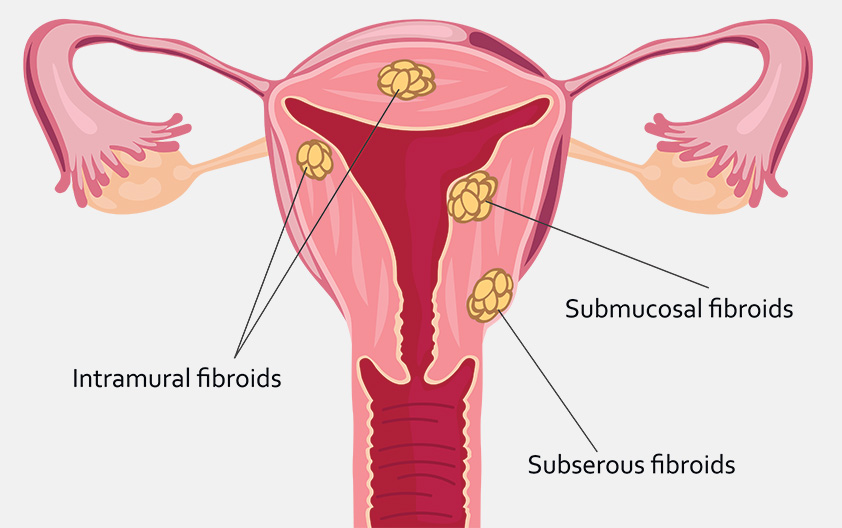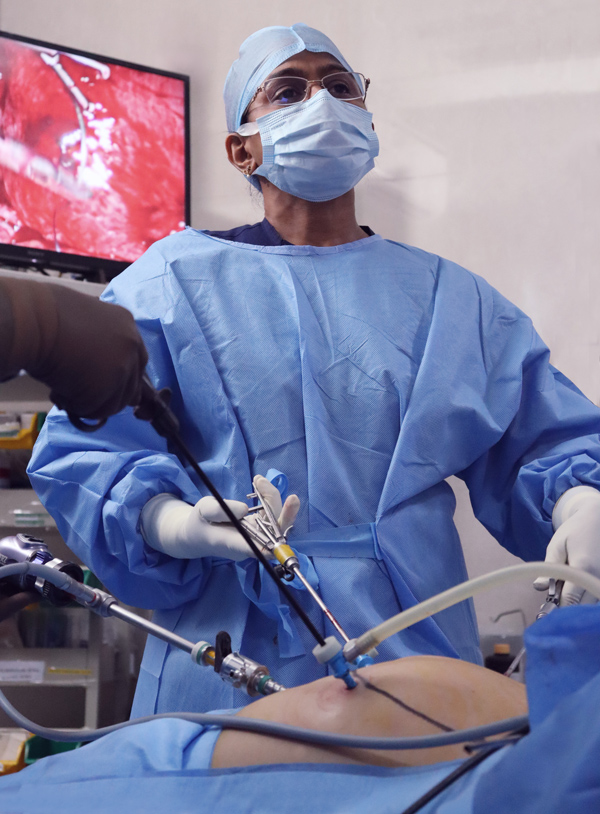Uterine Fibroids, known as uterine myomas or uterine leiomyomas are non-cancerous tumors that grow on the walls of the uterus. Fibroids can occur on both the inner and outer walls of the uterus and are prominent in women aged between 30 and 40.
Fibroids can sometimes be undetectable for the naked eye, but other times take the shape of bulky masses that can distort and enlarge the uterus.
Based on their size and location relative to the uterus, Fibroids are of four types: Intramural, Subserosal, Submucosal and Pedunculated. Most women with Uterine Fibroids may have more than one of these.
While experts debate on the exact cause of these tumors, it may be interesting to note that they may sometimes occur without any symptoms. Those women who do get symptoms may experience:
- Heavy menstrual flow
- Periods lasting more than a week
- Pelvic Pressure or Pain
- Frequent Urination
- Urinary Retention
- Constipation
- Backache or Leg Pains
Sometime Fibroids can be detected accidentally during general health checkup by pelvic examination or ultrasound. Generally speaking, uterine fibroids do not have a single identifiable cause, but a range of causes owing to family history, genetics, age, race or hormonal imbalances.
Fibroids can grow as a single nodule or as a cluster, ranging from 1 mm to 20 cm or larger, and pose a multitude of issues ranging from:
- Heavy menstrual flow
- Pelvic pain/discomfort
- Infertility
- Frequent Urination
- Severe back pain, and
- Constipation
Though fibroids have been known to not interfere with pregnancy, submucosal fibroids may raise the risk of pregnancy complications - such as placental abruption, fetal growth restriction and preterm delivery.
Fibroids when asymptomatic are confirmed by ultrasonography or, when required, by magnetic resonance imaging.
However, upon diagnosis, women should be made aware of all available treatment options; like medical, radiological, and surgical, and depending on the location and size, age, completed family or not, treatment options vary.
The most important question to ask before determining any potential treatment option should be whether fertility or preservation of the uterus, or both, is desired. Based on that one have either removal of the fibroid alone or removal of the uterus if she has completed her family and is above 45 years.


